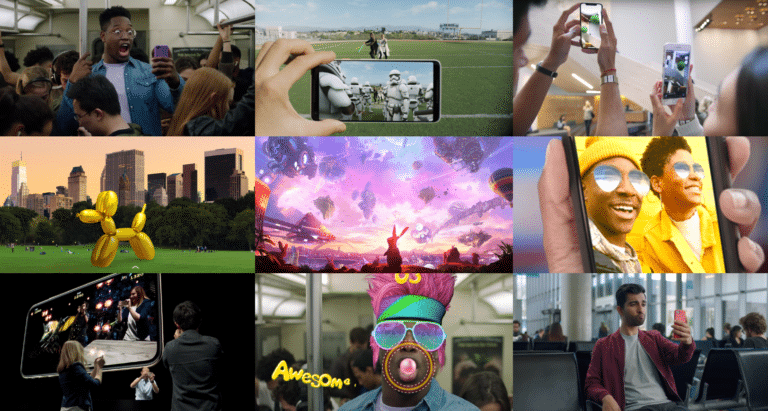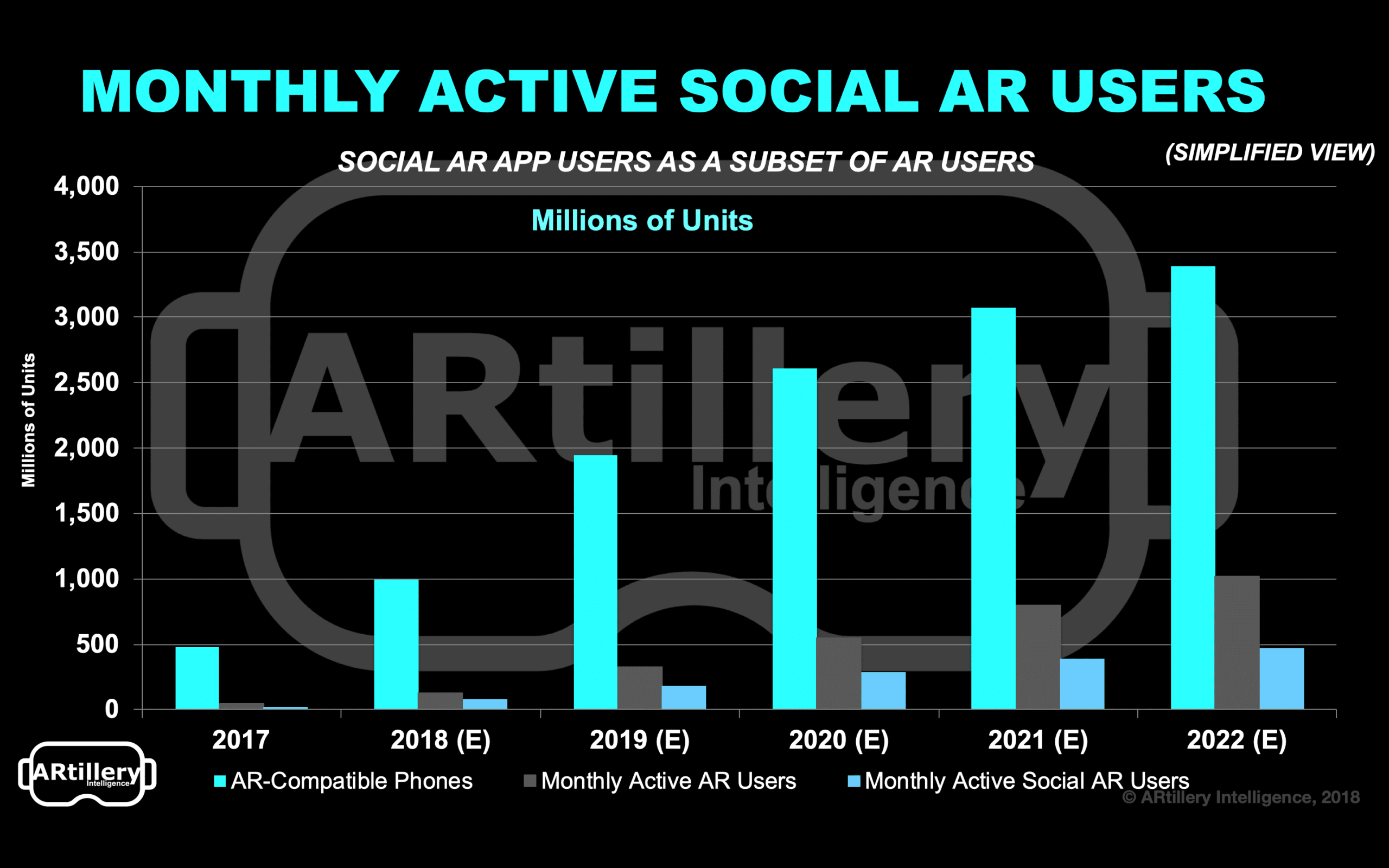
This post is adapted from ARtillery Intelligence’s latest report, Social AR: Spatial Computing’s Network Effect. It includes some of its data and takeaways. More can be previewed here and subscribe for the full report.
One of the biggest questions nagging the AR sector is, what will be its killer app? And when will it arrive? The medium needs such an accelerant to legitimize and bring AR into mainstream acceptance – something it’s failed to do in the 18-months since Apple’s ARkit launch.
We’ve speculated in past reports that killer apps will likely extend beyond the novel and “sexy” attributes that have thus far driven the industry’s speculation, imagination and design (e.g. games). It will rather be something more mundane that provides all-day utility, like visual search.
But another category will vie for the position of AR killer app: social. Indeed, you could argue that a social AR killer app has already arrived and accelerated mass acceptance: social lenses. We see these as an important AR “gateway drug,” but only a glimpse into social AR’s true potential.

Synchronicity
One thing missing from social AR lenses – though popular through Snapchat and Facebook – is meaningful social interaction. More “augmented media” than augmented reality, they’re created in isolation then shared with friends to be consumed asynchronously at a different time or place.
But true social AR will combine this time/place-shifted paradigm – which will still be valuable to achieve scale — with synchronous AR. This will rely on technically complex multi-player functionality, a key tenet of the AR cloud. But when it arrives, it will unlock new use cases.
Moreover, the multi-player use case inherently accelerates usage and adoption through viral growth. It can also benefit from the fundamentals of network effect. With each node (user) added to shared AR experiences, the value and appeal of those experiences can grow exponentially.

Real World MMO
Beyond the multiplayer angle, augmentation a natural fit for social interaction. Extending from social lenses (face filters, etc.), next-generation graphical overlays will include real-time layers of information that people choose to share with others through live AR overlays as they walk around.
These shared titbits could be mood, relationship status or stylistic accouterments. The latter opens the door for business models around the exchange of virtual style items. This builds on the concept of marketplaces for digital identity, manifesting today in communities like Fortnight.
Speaking of which, one construct for socially-oriented AR is – as Ubiquity 6 CEO Anjney Midha puts it – “an MMO for the real world.” This envisions layers of virtual worlds all around us, dynamically activated through AR interfaces, while managed and permissioned by creators.

And business models are already forming. AR lenses — the precursor to this vision — drove more than $400 million last year. But questions remain. Who will build this? What will the ecosystem consist of? Will there be open platforms for developers to create shared spatial experiences?
We tackle these questions in our latest report and will unpack some of its findings here in the coming weeks. But the ongoing evolution, user behavior and analysis, just like any early-stage technology, will happen over the course of years. Stay tuned for lots more.
For deeper XR data and intelligence, join ARtillery PRO and subscribe to the free AR Insider Weekly newsletter.
Disclosure: AR Insider has no financial stake in the companies mentioned in this post, nor received payment for its production. Disclosure and ethics policy can be seen here.
